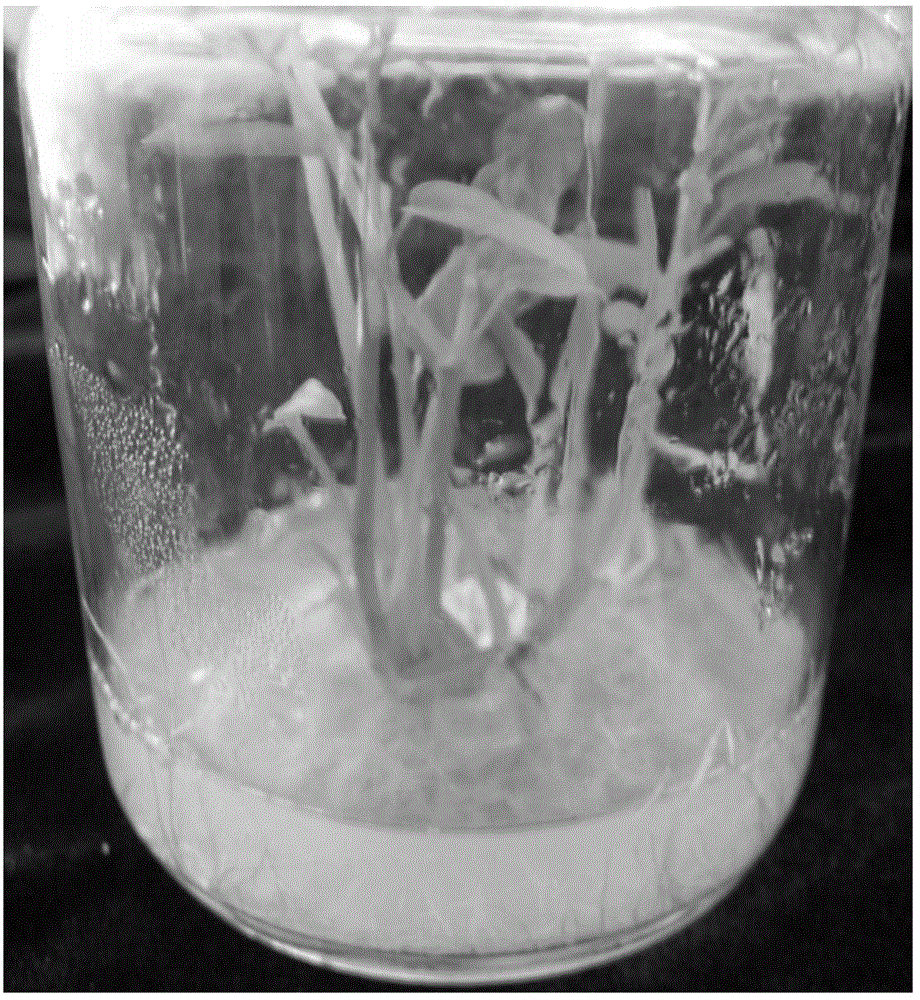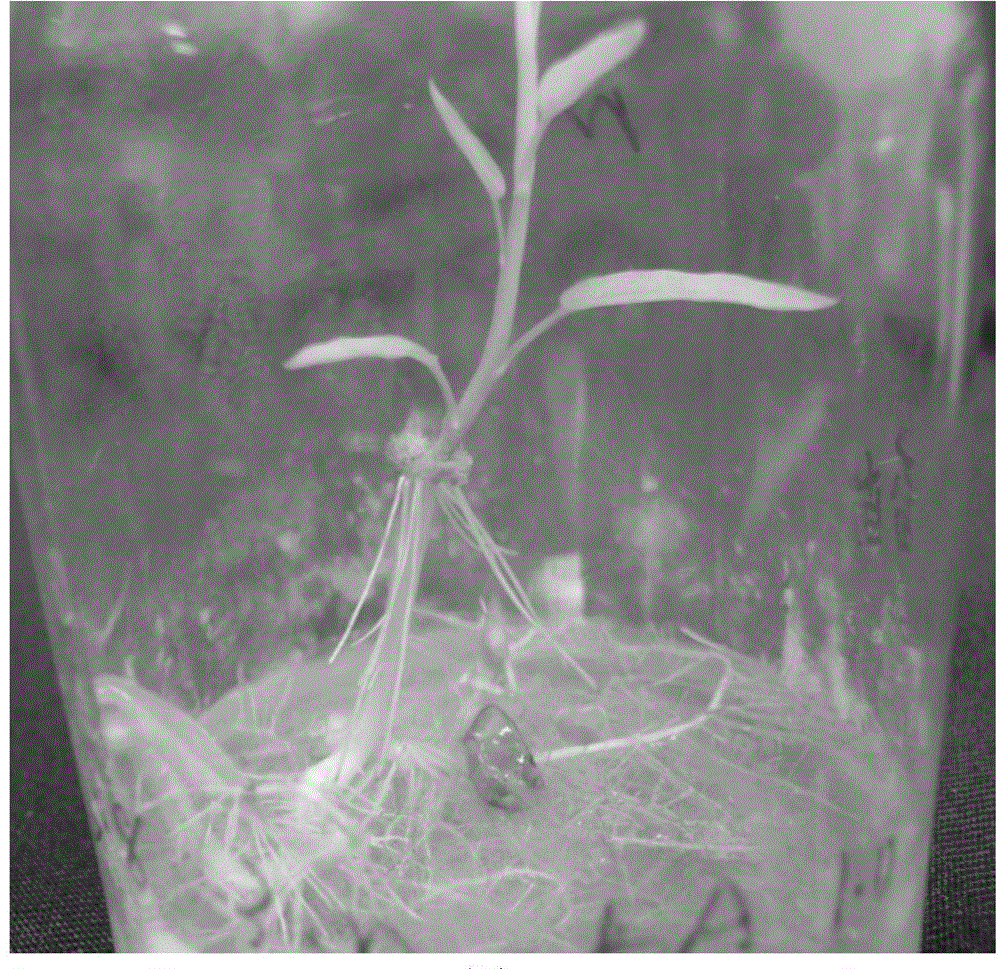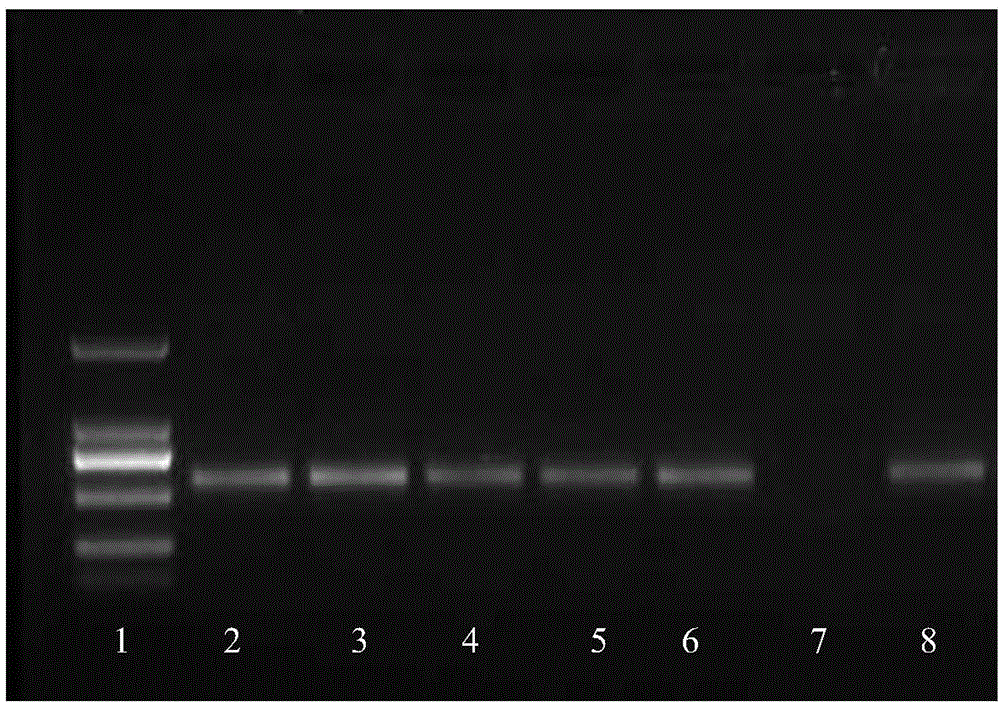Cultivation method of transgenic composite type ipomoea aquatica forsk for removing water body organic pollutants
A technology of organic pollutants and cultivation method, which is applied in the field of cultivation of transgenic compound water spinach, can solve problems such as no research reports on repairing organic pollutants, and achieves the effect of improving comprehensive repairing ability and improving repairing ability.
- Summary
- Abstract
- Description
- Claims
- Application Information
AI Technical Summary
Problems solved by technology
Method used
Image
Examples
Embodiment 1
[0027] Embodiment 1 water spinach tissue culture rapid propagation aseptic seedling
[0028] (1) The seeds of different genotypes such as farm water spinach, willow-leaf water spinach, broad-leaf water spinach, and Thai water spinach were selected as experimental starting materials.
[0029] (2) Select different disinfection methods to sterilize the seeds. The seed pollution situation after disinfection is shown in Table 1. 0.1% mercuric chloride refers to a mass concentration of 0.1% mercuric chloride aqueous solution, and 75% alcohol is a volume concentration of 75% ethanol aqueous solution. The % sodium hypochlorite is 20% sodium hypochlorite aqueous solution. The results show that the disinfection effect of 0.1% mercuric chloride for 7.5 minutes is the best for seeds without pollution, and the germination rate of willow-leaf water spinach is the highest.
[0030] Table 1 Seed disinfection
[0031]
[0032] (3) Select different culture media and perform tissue culture o...
Embodiment 2
[0037] The acquisition method of embodiment 2 trans cyp2e1 gene water spinach
[0038] (1) Preparation of Agrobacterium rhizogenes infection solution containing cyp2e1 gene
[0039] The cyp2e1 gene is cloned from rabbit hepatocytes by RT-PCR. The GenBank accession number of the cyp2e1 gene is M15061, and the nucleotide sequence is shown in SEQ ID NO:1.
[0040]
[0041]
[0042] The plant transgene expression vector pSLD50-6 containing cyp2e1 gene was provided by Professor Doty of Washington University.
[0043] Using the freeze-thaw method, pSLD50-6 was introduced into competent Agrobacterium rhizogenes K599 cells (purchased from the National Collection of Plant Pathogenic Bacteria in U.K.), and recombinant Agrobacterium rhizogenes K599 / pSLD50-6 was constructed.
[0044] Inoculate recombinant Agrobacterium rhizogenes K599 / pSLD50-6 in LB liquid medium containing Km (kanamycin) 50 mg / L + Str (streptomycin) 50 mg / L, and cultivate to OD at 28°C and 200 r / min 600 0.4-0.6, ...
Embodiment 3
[0058] Example 3 Water spinach containing cyp2e1 gene's resistance and absorption analysis to water organic pollutants
[0059] The water spinach plant containing the cyp2e1 gene prepared in Example 2 (the transgenic plant obtained by growing hairy roots at the position of stem height 4-5cm) and the control plant (wild type) were respectively treated with 10 μg / mL benzene 1 / 2MS culture medium or 1 / 2MS culture medium containing 15μg / mL trichlorethylene, culture temperature is 18-25℃. The results showed that after 7 days of culture, the control non-transgenic plants withered in 1 / 2MS medium containing 10 μg / mL benzene or 1 / 2MS medium containing 15 μg / mL trichlorethylene, while the water spinach plants containing cyp2e1 gene remained normal growth ( Figure 5 ). With reference to methods such as Doty (Doty SL, Shang QT, Wilson AM, Westergreen AD, Newman LA, Strand SE, Gordon MP.Enhanced metabolism of halogenated hydrocarbons in transgenic plants containing mammalian cytochrome ...
PUM
 Login to View More
Login to View More Abstract
Description
Claims
Application Information
 Login to View More
Login to View More - R&D
- Intellectual Property
- Life Sciences
- Materials
- Tech Scout
- Unparalleled Data Quality
- Higher Quality Content
- 60% Fewer Hallucinations
Browse by: Latest US Patents, China's latest patents, Technical Efficacy Thesaurus, Application Domain, Technology Topic, Popular Technical Reports.
© 2025 PatSnap. All rights reserved.Legal|Privacy policy|Modern Slavery Act Transparency Statement|Sitemap|About US| Contact US: help@patsnap.com



